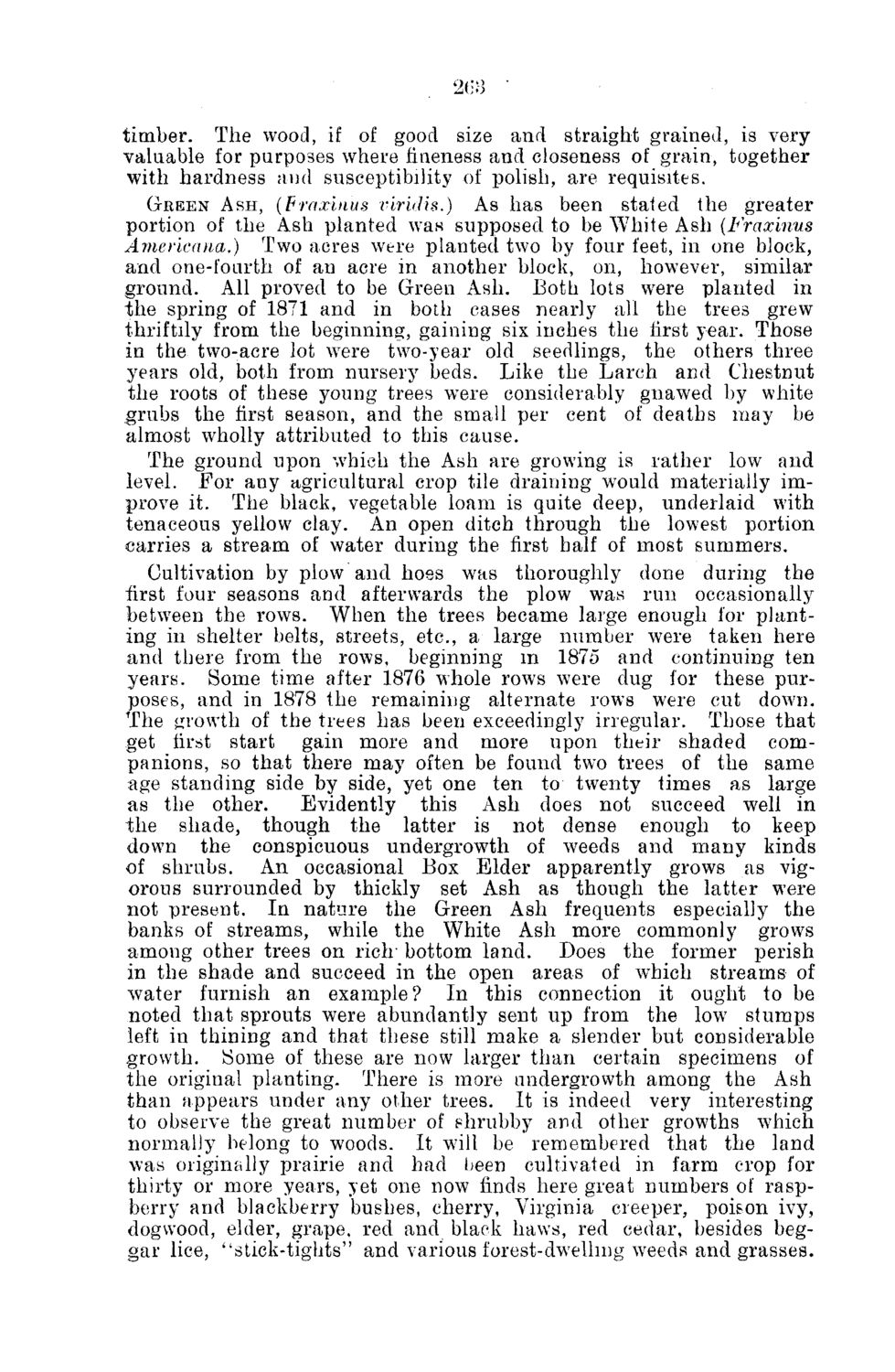| |
| |
Caption: Board of Trustees Minutes - 1886
This is a reduced-resolution page image for fast online browsing.

EXTRACTED TEXT FROM PAGE:
2m timber. The wood, if of good size and straight grained, is very valuable for purposes where fineness and closeness of grain, together with hardness and susceptibility of polish, are requisites. GREEN ASH, (Fraxinus virklis.) As has been stated the greater portion of the Ash planted was supposed to be White Ash {Fraxinus Americana.) Two acres were planted two by four feet, in one block, and one-foarth of an acre in another block, on, however, similar ground. All proved to be Green Ash. Both lots were planted in the spring of 1871 and in both cases nearly all tbe trees grew thriftily from the beginning, gaining six inches the first year. Those in the two-acre lot wTere two-year old seedlings, the others three years old, both from nursery beds. Like the Larch and Chestnut the roots of these young trees wTere considerably gnawed by white grubs the first season, and the small per cent of deaths may be almost wholly attributed to this cause. The ground upon which the Ash are growing is rather low and level. For any agricultural crop tile draining wrould materially improve it. The black, vegetable loam is quite deep, underlaid with tenaceous yellow clay. An open ditch through the lowest portion carries a stream of water during the first half of most summers. Cultivation by plow and hoes was thoroughly done during the tirst four seasons and afterwards the plow was run occasionally between the rows. When the trees became large enough for planting in shelter belts, streets, etc., a large number were taken here and there from the rows, beginning m 1875 and continuing ten years. Some time after 1876 whole rows were dug for these purposes, and in 1878 the remaining alternate rows were cut down. The growth of the trees has been exceedingly irregular. Those that get first start gain more and more upon their shaded companions, so that there may often be found two trees of the same age standing side by side, yet one ten to twenty times as large as the other. Evidently this Ash does not succeed well in the shade, though the latter is not dense enough to keep down the conspicuous undergrowth of weeds and many kinds of shrubs. An occasional Box Elder apparently grows as vigorous surrounded by thickly set Ash as though the latter were not present. In nature the Green Ash frequents especially the banks of streams, while the White Ash more commonly grows among other trees on rich bottom land. Does the former perish in the shade and succeed in the open areas of which streams of water furnish an example? In this connection it ought to be noted that sprouts were abundantly sent up from the low stumps left in thining and that these still make a slender but considerable growth. Some of these are now larger than certain specimens of the original planting. There is more undergrowth among the Ash than appears under any other trees. It is indeed very interesting to observe the great number of shrubby and other growths which normally belong to woods. It will be remembered that the land was originally prairie and had been cultivated in farm crop for thirty or more years, yet one now finds here great numbers of raspberry and blackberry bushes, cherry, Virginia creeper, poison ivy, dogwood, elder, grape, red and black haws, red cedar, besides beggar lice, "stick-tights" and various forest-dwrelhng wreeds and grasses.
| |